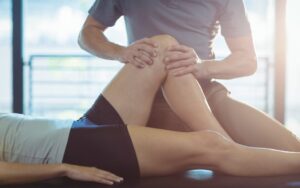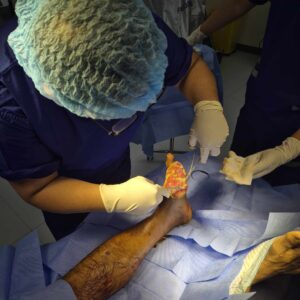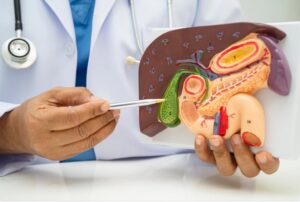Balance and gait disorders are medical conditions that affect the way individuals stand, walk, and move. These disorders can significantly impact daily life, leading to difficulty performing everyday tasks, an increased risk of falls, and a diminished quality of life. In this article, we will explore the causes, symptoms, and treatment options for balance and gait disorders, with a special focus on the importance of proper treatment and the role of specialists like Osteopractic Physical Therapy of Central Indiana in helping individuals regain their mobility and confidence.
What Are Balance and Gait Disorders?
Balance and gait disorders refer to issues that affect an individual’s ability to maintain stability while standing or walking.
Balance disorders occur when the body’s ability to maintain its center of gravity is disrupted, leading to feelings of dizziness, vertigo, or lightheadedness. These issues can stem from problems in the inner ear, brain, or the nervous system, all of which play a crucial role in maintaining balance.
Gait disorders, on the other hand, affect the way an individual walks. They may experience difficulty in coordination, shuffling, or an unsteady gait that can lead to a higher likelihood of falls. Both balance and gait disorders can occur simultaneously and often affect older adults, but they can also affect younger individuals due to underlying medical conditions or injuries. Understanding balance and gait disorders treatment options is crucial to improving a patient’s stability and movement.
Causes of Balance and Gait Disorders
Several factors can contribute to balance and gait disorders. Identifying the underlying cause is essential for effective balance and gait disorders treatment. Below are some of the common causes:
Neurological Causes
Neurological conditions such as stroke, Parkinson’s disease, and multiple sclerosis can significantly affect an individual’s ability to maintain balance and proper gait. These disorders interfere with the brain’s communication with the muscles, resulting in difficulties with coordination, balance, and walking.
Parkinson’s disease, for example, causes tremors and stiffness, leading to a shuffling gait and postural instability. The brain’s inability to effectively communicate with muscles requires targeted balance and gait disorders treatment, such as physical therapy or medication, to help manage symptoms and improve mobility.
Inner Ear Problems
The inner ear is responsible for regulating balance. Disorders such as benign paroxysmal positional vertigo (BPPV), Meniere’s disease, and vestibular neuritis can cause dizziness and a loss of balance. These conditions impact the vestibular system, which helps control the body’s sense of balance. Treating balance disorders stemming from the inner ear often involves physical therapy techniques like vestibular rehabilitation therapy (VRT) and in some cases, surgery to correct structural issues.
Musculoskeletal Causes
Musculoskeletal problems like arthritis, joint pain, or muscle weakness can also lead to balance and gait issues. When joints are stiff or weak, it becomes harder to maintain stability while walking, and muscle strength is necessary for a smooth gait. Balance and gait disorders treatment for musculoskeletal causes often include physical therapy to strengthen muscles and improve joint mobility.
Age-Related Factors
As individuals age, their balance and gait can naturally decline due to a weakening of the muscles and nervous system. The risk of falls increases in older adults, especially those with conditions like osteoporosis, diabetes, or Alzheimer’s disease. Regular physical activity and specialized balance and gait disorders treatment, including exercises for strength and coordination, can help prevent falls and maintain mobility in older adults.
Symptoms of Balance and Gait Disorders
Recognizing the symptoms of balance and gait disorders is the first step toward getting the right balance and gait disorders treatment. Common symptoms include:
- Dizziness or Vertigo: A feeling of spinning or lightheadedness that makes it difficult to stand still.
- Unsteady Walk: Difficulty walking in a straight line or an uncoordinated gait.
- Shuffling Feet: Moving the feet slowly and without lifting them properly off the ground.
- Frequent Falls: A higher incidence of falling, particularly while walking or standing.
- Visual Disturbances: Blurry or double vision can contribute to balance issues, making it harder to navigate through space.
- Postural Instability: Difficulty in maintaining an upright position, particularly while standing.
If these symptoms are persistent or worsen over time, seeking balance and gait disorders treatment is essential. A healthcare professional can diagnose the condition and develop an appropriate treatment plan.
Diagnosing Balance and Gait Disorders
The diagnostic process for balance and gait disorders typically involves a thorough evaluation to determine the cause. The physician will often begin by reviewing the patient’s medical history and conducting a physical examination. Several diagnostic tests may be used, including:
Medical History and Physical Exam
A doctor will inquire about the patient’s symptoms, medical history, and any existing conditions that might contribute to balance or gait issues. A physical exam may include assessing strength, flexibility, and walking patterns.
Vestibular Testing
For individuals experiencing dizziness or vertigo, vestibular testing can evaluate the function of the inner ear and balance system. This can help diagnose conditions like BPPV, Meniere’s disease, and vestibular neuritis.
MRI and CT Scans
These imaging tests may be used to look for structural problems in the brain, spinal cord, or inner ear that could be affecting balance and gait.
Gait Analysis
A gait analysis is performed to observe the way a person walks. It can help identify any irregularities or abnormalities in walking patterns that could be linked to underlying conditions.
Role of Specialists
For accurate diagnosis and effective balance and gait disorders treatment, healthcare professionals like neurologists, audiologists, and physical therapists play a key role. For example, Osteopractic Physical Therapy of Central Indiana specializes in diagnosing and treating balance and gait disorders through comprehensive physical therapy and rehabilitation programs.
Treatment Options for Balance and Gait Disorders
There are various treatment options for balance and gait disorders, and the right treatment depends on the underlying cause. Some common approaches include:
Physical Therapy and Rehabilitation
Physical therapy is often a cornerstone of balance and gait disorders treatment. A physical therapist will guide patients through specific exercises designed to improve strength, flexibility, and coordination. This can include balance exercises, gait retraining, and proprioceptive training (improving awareness of body position in space).
At Osteopractic Physical Therapy of Central Indiana, physical therapists work with patients to create personalized treatment plans that address both balance and gait issues, helping patients regain independence and reduce the risk of falls.
Medications
For balance disorders caused by neurological conditions or inner ear problems, medications may be prescribed. These can include anti-dizziness drugs, anti-nausea medications, and treatments for underlying conditions like Parkinson’s disease or vestibular disorders.
Surgical Treatment
In some cases, surgery may be necessary. For example, when balance problems are caused by vestibular disorders, a procedure such as vestibular nerve section or even deep brain stimulation for Parkinson’s disease may be recommended.
Assistive Devices
For individuals with severe balance and gait disorders, assistive devices like walkers or canes can provide additional support and improve safety. These devices help patients maintain stability and reduce the risk of falls, especially in environments that may pose a challenge.
Lifestyle Modifications
Adopting a healthier lifestyle is an important aspect of balance and gait disorders treatment. This may include regular exercise, a balanced diet to maintain muscle and bone strength, and fall-proofing the home environment to reduce hazards.
Prevention and Self-Care for Balance and Gait Disorders
Prevention is key when it comes to balance and gait disorders. Maintaining a healthy lifestyle, staying physically active, and avoiding fall risks are essential components of prevention. Regular exercise, especially strength and balance training, can greatly improve mobility and reduce the risk of falls.
Takeaway
Balance and gait disorders can significantly affect an individual’s quality of life, but with the right diagnosis and treatment, most individuals can regain their stability and mobility. Whether the disorder is due to a neurological condition, musculoskeletal issue, or inner ear problem, balance and gait disorders treatment can help improve overall function and reduce fall risk.
If you or someone you know is experiencing symptoms of balance and gait disorders, don’t hesitate to reach out to professionals like Osteopractic Physical Therapy of Central Indiana for a comprehensive evaluation and tailored treatment plan. Early intervention is crucial in preventing further complications and improving outcomes for those affected by these conditions.






